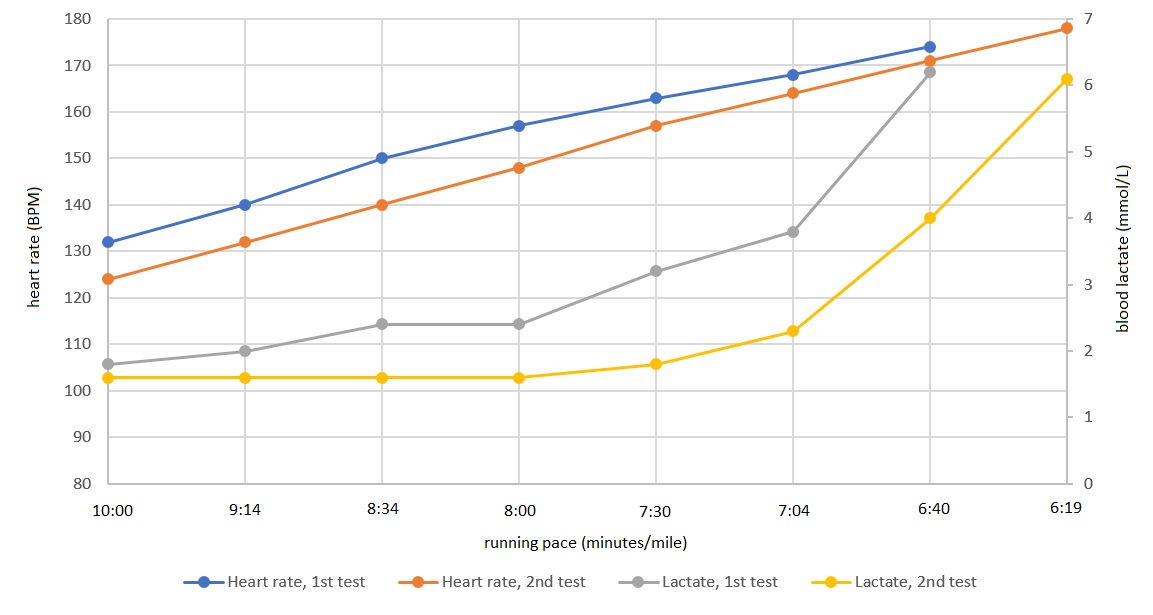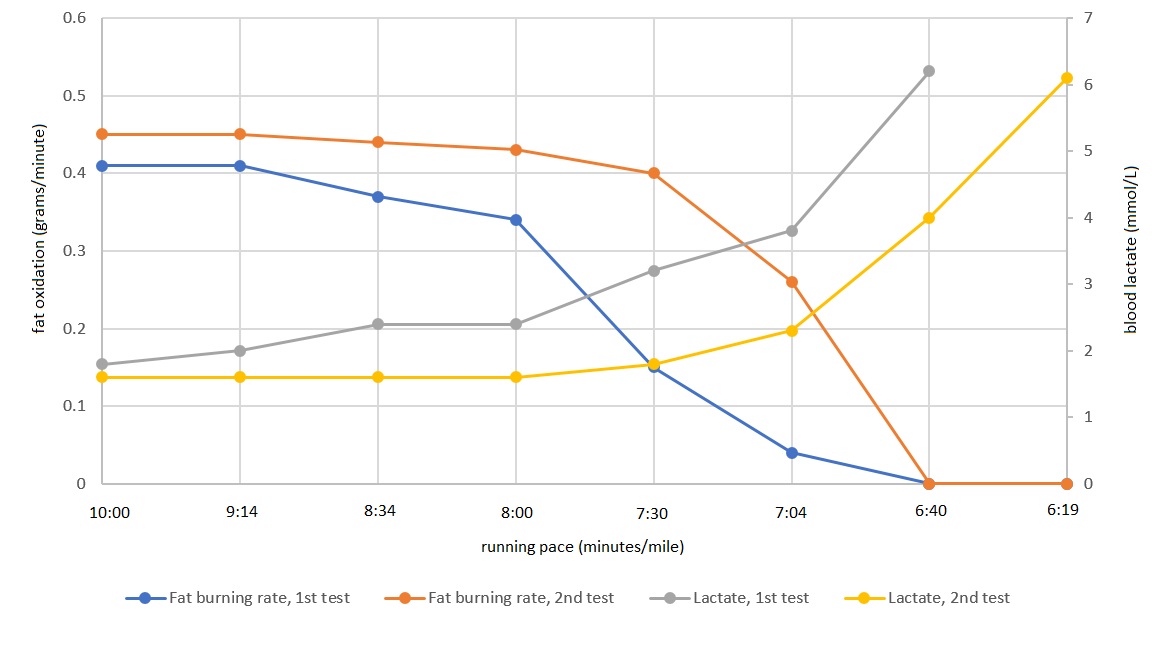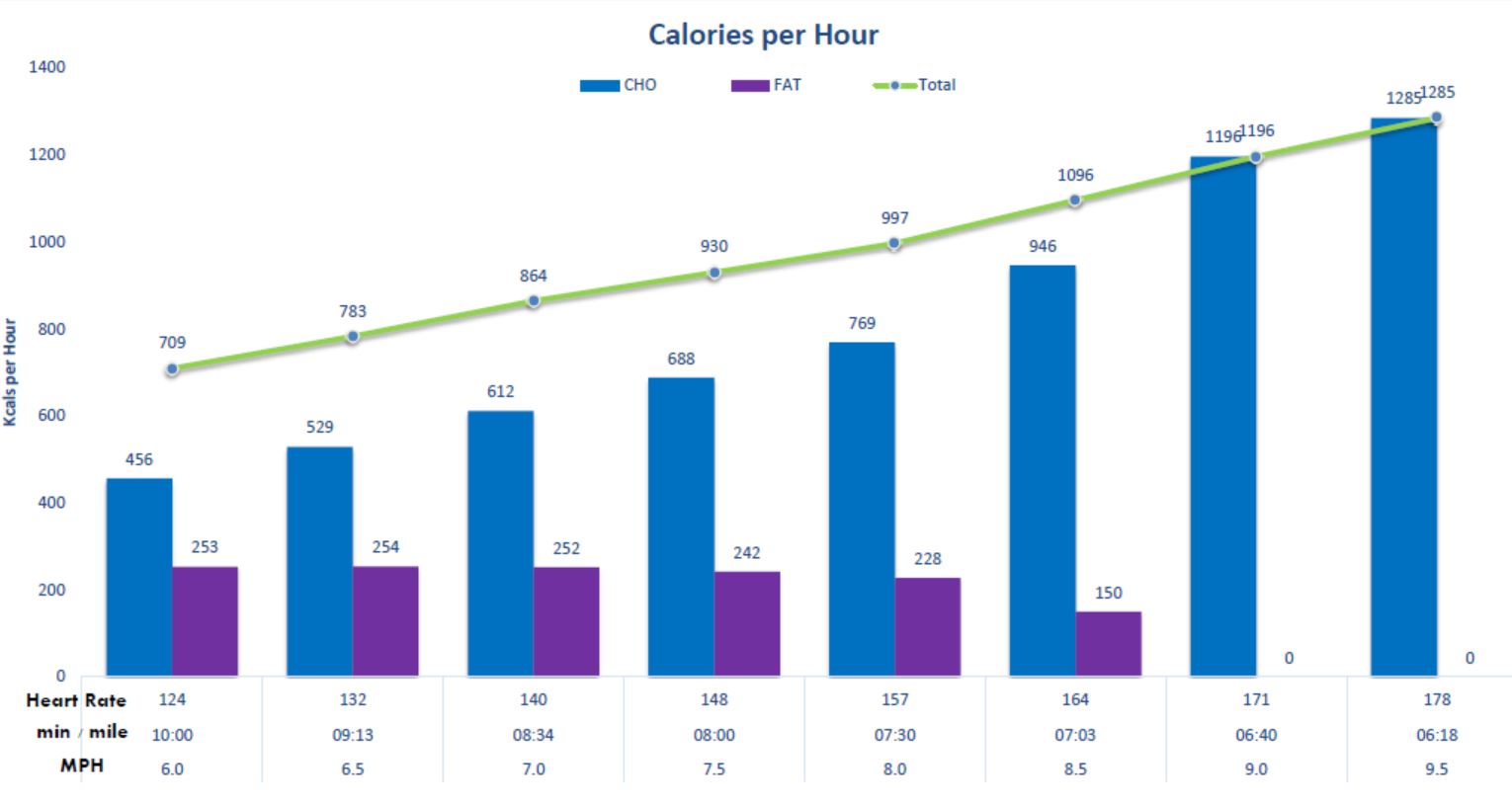Peter:
If you have the raw data for your test locate the point where the RER (Respiratory Exchange Ratio) reaches .85. That is also used to locate the point where fat/carbs is at cross over. As you point out 2mMol and crossover do not always match. In my experience; they will for well endurance trained athletes. Why? I’ve had discussions about this with many exercise scientists and there is not one answer. They best I can come up with is that low lactates coupled with a low crossover point is likely due to those individuals who have accumulated a bunch of training volume above AeT having developed a high level of aerobic enzymes that move the pyruvate into the mitochondria (into the aerobic pathway) and hence keep lactate accumulation low. That’s probably more that you wanted to know :-).
I suggest training below the crossover point HR even if that is below your 2mMol level. This will ensure increased fat metabolism moving that cross over point up to the 2mMol level which will also begin to move up in HR in response to this same training.
Scott



